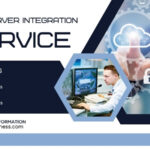Introduction
One effective approach to address their IT needs is through staff augmentation. IT staff augmentation involves the allocation of specialized IT professionals to enhance a company’s existing workforce temporarily. In this IT Staff Augmentation Handbook, we will investigate all the ins and outs of IT staff augmentation, covering its types, benefits, processes and more.
What is IT Staff Augmentation
Definition & Explanation
IT staff augmentation is a training that allows businesses to hire external IT professionals temporarily for augmenting their existing workforce. These professionals are known as augmented staff and they work along with the company’s core team to provide support for specific projects or tasks. This approach enables companies to tap into specialized skills without the need for long-term commitments.
Here are some Key Objectives which you should take under Consideration:
- Enhance your existing workforce with specialized skills.
- Address short-term projects effectively.
- Connect to a software development company for gaining a competitive edge in the market.
- Utilize all the resources with the help of custom software development services.
Types of IT Staff Augmentation
Onshore Augmentation
Onshore IT staff augmentation means the company needs to hire IT professionals from within the same country or geographic location. This offers close collaboration, minimal time zone differences and easy communication.
Offshore Augmentation
Offshore IT staff augmentation means the process of hiring professionals from a different country or continent. This type is known for its cost-effectiveness, access to a vast talent pool, and round-the-clock project progress.
Nearshore Augmentation
Nearshore IT staff augmentation involves hiring professionals from neighboring countries or regions. This approach strikes a balance between onshore & offshore offering geographical proximity, cultural affinity, and cost-effectiveness.
Benefits
Cost Effectiveness
It eliminates the need for permanent hiring which saves companies recruitment and training expenses. Additionally, businesses can scale their teams as per project demands, optimizing costs further.
Access to Specialized skills
By advancing teams, your businesses can gain access to a diverse talent pool with niche expertise. This enables them to tackle complex projects without investing in extensive training.
Increased Flexibility
It offers flexibility to ramp up or down the team’s size as project requirements change. This adaptability allows businesses to remain prompt and nimble.
Time Efficiency
The hiring process for IT staff augmentation is quicker than traditional recruitment. Companies can now onboard experienced professionals appropriately resulting in reduced project start-up time.
The IT Staff Recruiting Process
Identify project requirements
Before initiating the IT staff recruiting process businesses must clearly define their project requirements and objectives. This involves assessing the skills and expertise needed to accomplish the project successfully.
Select Right Talent
Once the project requirements are identified the next step is to select the right talent for the job. You can partner with a reputable Custom software development company or conduct their own talent search to find professionals who match their project’s specific needs.
Onboarding & Integration
Effective onboarding is crucial to ensure seamless integration of augmented staff into the existing team. This includes providing necessary training and access to tools that help them to add value to company’s culture.
Project Management and Support
Throughout the project’s lifecycle efficient project management is essential for successful outcomes. Companies must provide continuous support, monitor progress and address any challenges that arise during the course of the project.
Best Practices For Successful IT Staff Augmentation
Clear Communication and Expectations
Open communication is important for successful IT staff augmentation. Companies should clearly communicate project goals, timelines and performance expectations with the team.
Establish Performance Metrics
Measuring the performance of staff helps in assessing their impact on the project. Companies should establish clear performance metrics and regularly evaluate the team’s progress.
Confidence and Security
Staff may have access to sensitive information related to the company. So, ensuring confidentiality and data security is essential. Non-disclosure agreements and robust security measures should be placed effectively.
Regular Evaluation and feedback
Regular evaluation and feedback sessions with staff promote a collaborative environment and provide an opportunity to address any issues appropriately.
Challenges and How to Overcome Them?
Cultural and Communicational Differences
Working with staff members from different cultural backgrounds may lead to communication challenges. To overcome this companies should foster a diverse and inclusive work environment and encourage open dialogue.
Team Collaboration & Integration
Integrating augmented staff into an existing team may pose integration challenges. Team-building exercises, regular meetings and virtual team-building activities can enhance collaboration.
Time Zone Variations
In the case of offshore or nearshore augmentation time zone differences may impact communication and project progress. Utilizing project management tools and establishing overlapping work hours can solve this issue.
Mitigating Risks and Conflicts
To minimize project risks and conflicts clear contractual agreements and contingency plans should be in place. Quick and decisive action can prevent minor issues from escalating.
Case Studies: Real-Life Examples of Successful IT Staff Augmentation
Company A: Expanding Product Development
Company A, a growing tech startup sought to accelerate its product development process. By leveraging IT staff augmentation they recruited skilled developers and QA specialists leading to a significant reduction in time-to-market and increased customer satisfaction
Company B: Scaling Customer Support
Company B, a global e-commerce giant experienced a surge in customer support demands during peak seasons. Through onshore IT staff augmentation they hired customer service representatives with multilingual capabilities, improving customer support and resolving queries efficiently.
The Future of IT Staff Augmentation
Technological Advancements
As technology continues to evolve IT staff is poised to embrace new tools and platforms. Virtual collaboration tools such as augmented reality and artificial intelligence will enhance communication and efficiency.
Remote Work Trends
The rise of remote work has significantly impacted the IT staff augmentation landscape. Companies now have access to a global talent pool and can engage seamlessly with professionals from different corners of the world
Impact of AI and Automation
Advancements in AI and automation may help in reshaping IT staff augmentation. When tasks will be automated the demand for specialized skills in Artificial intelligence development and management will increase.
Conclusion
IT staff augmentation is a powerful solution for businesses seeking to enhance their workforce, access specialized skills and achieve cost-effective scalability. By clearly defining project requirements, selecting the right talent, and implementing best practices companies can maximize the benefits of IT staff augmentation.
As the industry evolves embracing technological advancements and remote work trends will further elevate the potential of IT staff augmentation. By overcoming challenges through effective communication, team integration, and risk mitigation businesses can ensure successful project outcomes With the continuous evolution of technology and the ever-changing business landscape staff members will be able to maintain a key strategy for companies to adapt, innovate and thrive.









